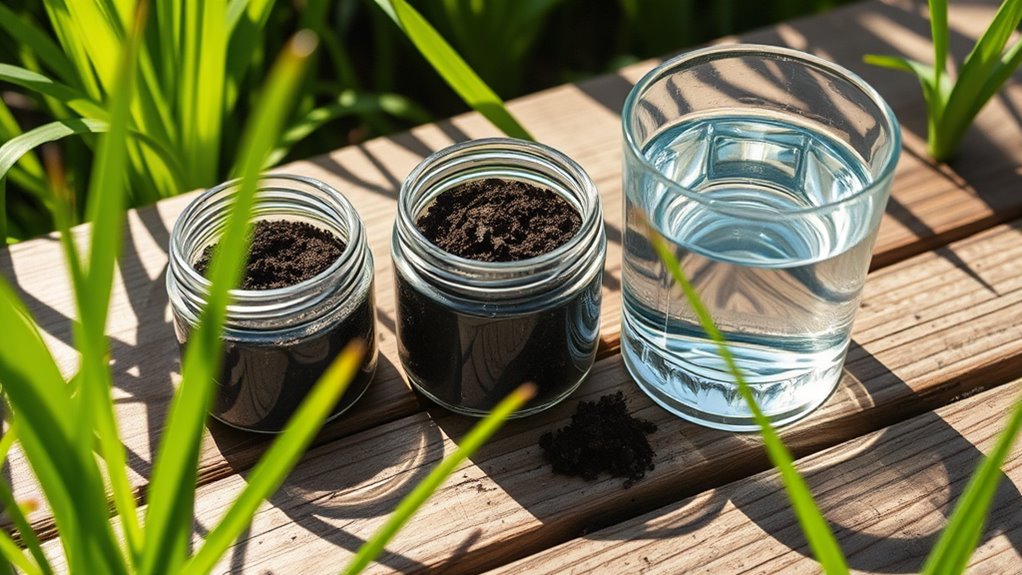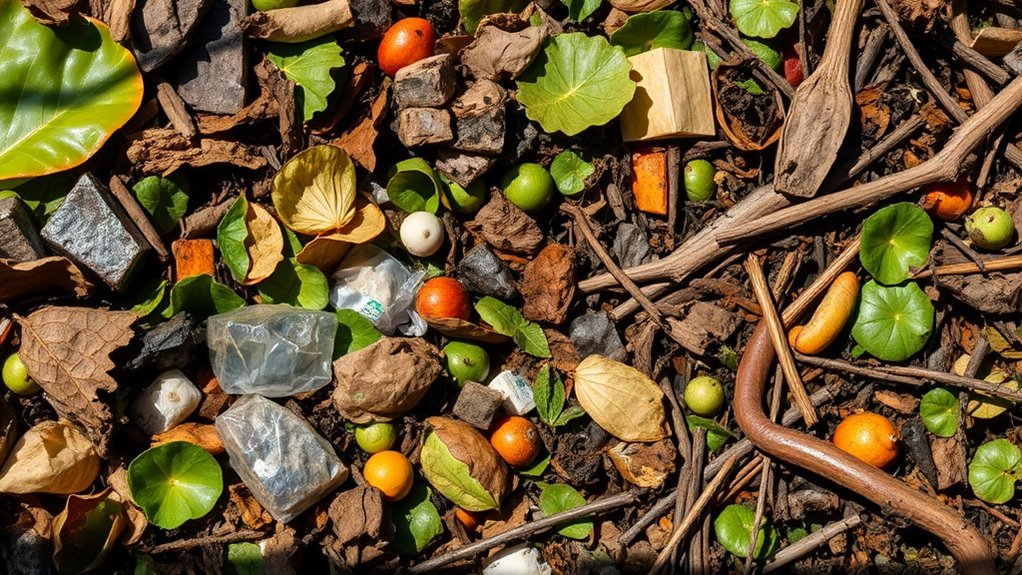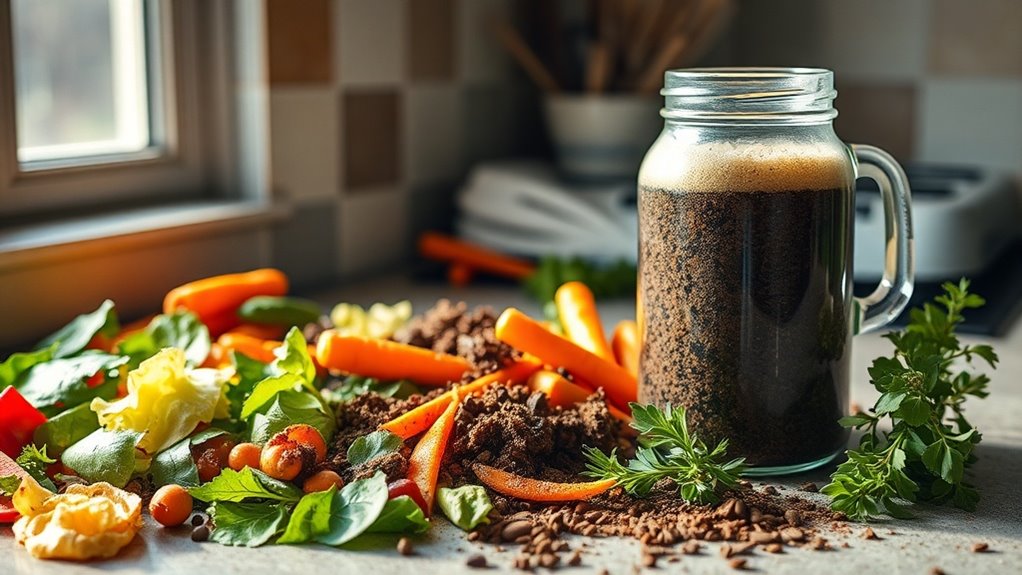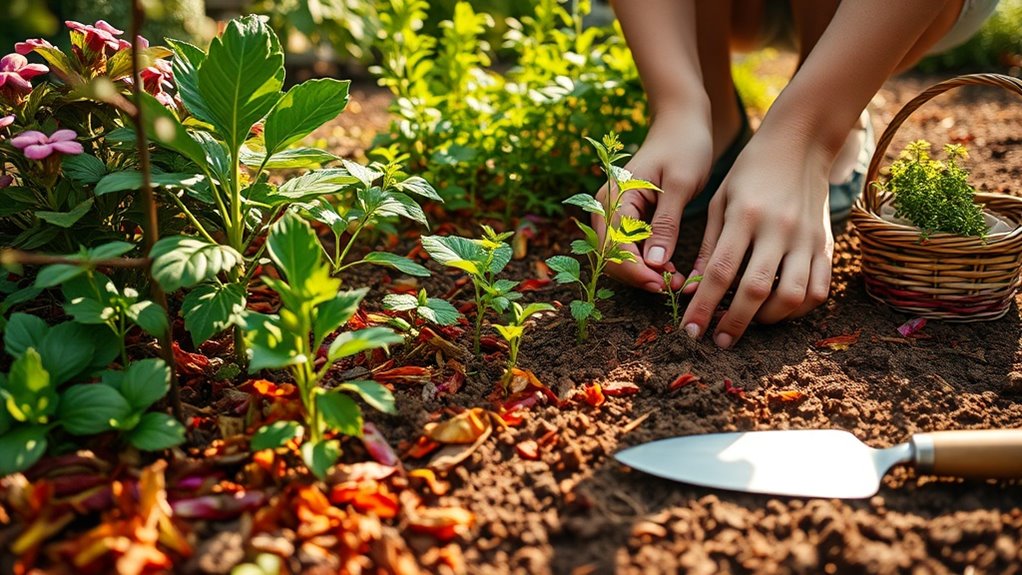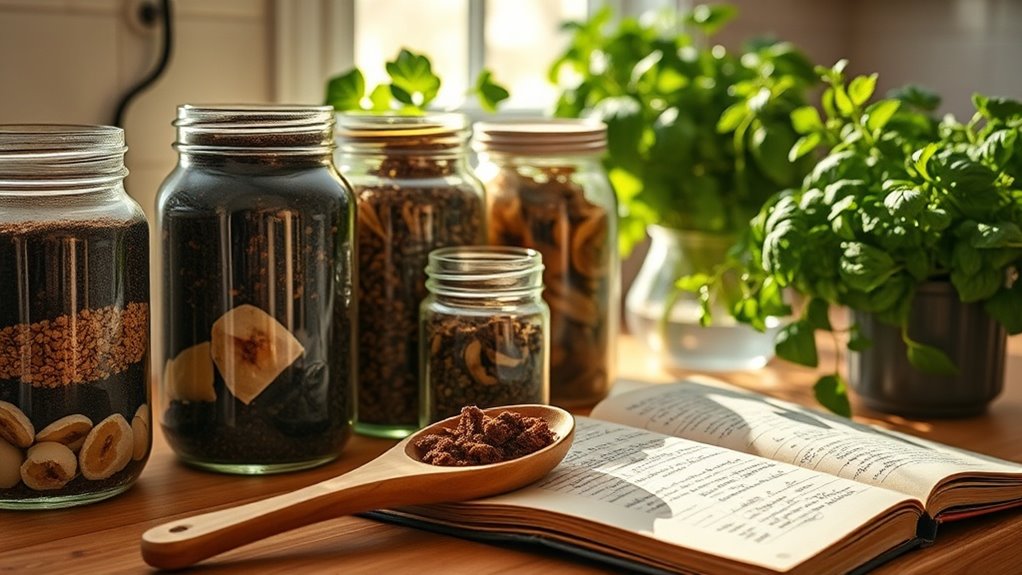3 Ways to Test Your Soil Health Without a Kit
To assess soil health effectively, you can conduct a visual inspection, perform a texture test using the jar method, and evaluate the soil’s smell and feel. Each method provides critical insights into your soil’s condition. Understanding these techniques can help you determine your soil’s fertility and structure. Yet, the nuances of soil evaluation go beyond mere observation and require a deeper exploration into the specific characteristics that define healthy soil.
Key Takeaways
- Conduct a visual inspection by checking soil color, moisture level, and signs of life like earthworms to assess overall health.
- Use the jar method to analyze soil texture by mixing soil with water and dish soap, then observing settled layers after 24 hours.
- Evaluate soil by squeezing a moist sample; a crumbly texture indicates good structure, while foul smells suggest poor aeration.
- Assess soil compaction by testing if it crumbles easily; compacted soil can hinder root growth and water drainage.
- Observe the soil’s appearance; dark soil indicates organic richness, while lighter hues may signal nutrient deficiencies needing attention.
Visual Inspection of Soil Structure
A thorough visual inspection of soil structure reveals critical insights into its health and functionality.
When you test garden soil, observe its color, moisture level, and granulation.
Dark soil often indicates organic richness, while lighter hues may suggest nutrient deficiencies.
Check for compaction; well-aerated soil should crumble easily in your hands.
Look for signs of life, such as earthworms and insects, which indicate a thriving ecosystem.
Note any layering or unusual textures, as these can affect water drainage and root growth.
Additionally, soil structure plays a vital role in determining how well your plants can access nutrients and water.
Soil Texture Test Using the Jar Method
Understanding soil texture is crucial for effective gardening and agriculture, and the jar method provides a straightforward way to assess it.
To perform this test, you’ll need a clear container, soil, water, and a bit of dish soap.
- Fill the jar with soil and water, leaving some space at the top.
- Add a few drops of dish soap, then shake vigorously.
- Let it settle for 24 hours, observing the distinct layers formed.
This method reveals the proportions of sand, silt, and clay, helping you make informed decisions about soil amendments and crop selection for optimal growth. Additionally, knowing your soil texture can help identify signs of struggling soil that may need attention for improved plant health.
Smell and Feel Assessment of Soil Quality
After assessing soil texture through methods like the jar technique, evaluating soil quality through smell and feel can provide additional insights into its health.
Start by gently squeezing a moist soil sample; a crumbly texture indicates good aeration and microbial activity.
Next, take a whiff; a rich, earthy smell suggests organic matter presence, while a sour or rotten odor may indicate anaerobic conditions or excessive acidity.
Observe the soil’s temperature; cooler soil often retains moisture better. Additionally, incorporating natural materials such as compost can further enhance soil structure and nutrient availability.

